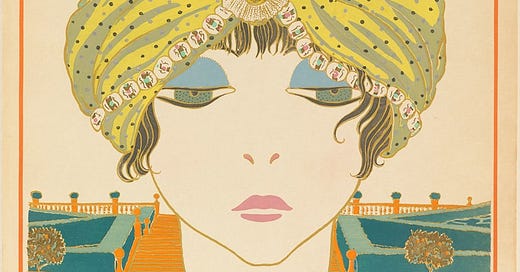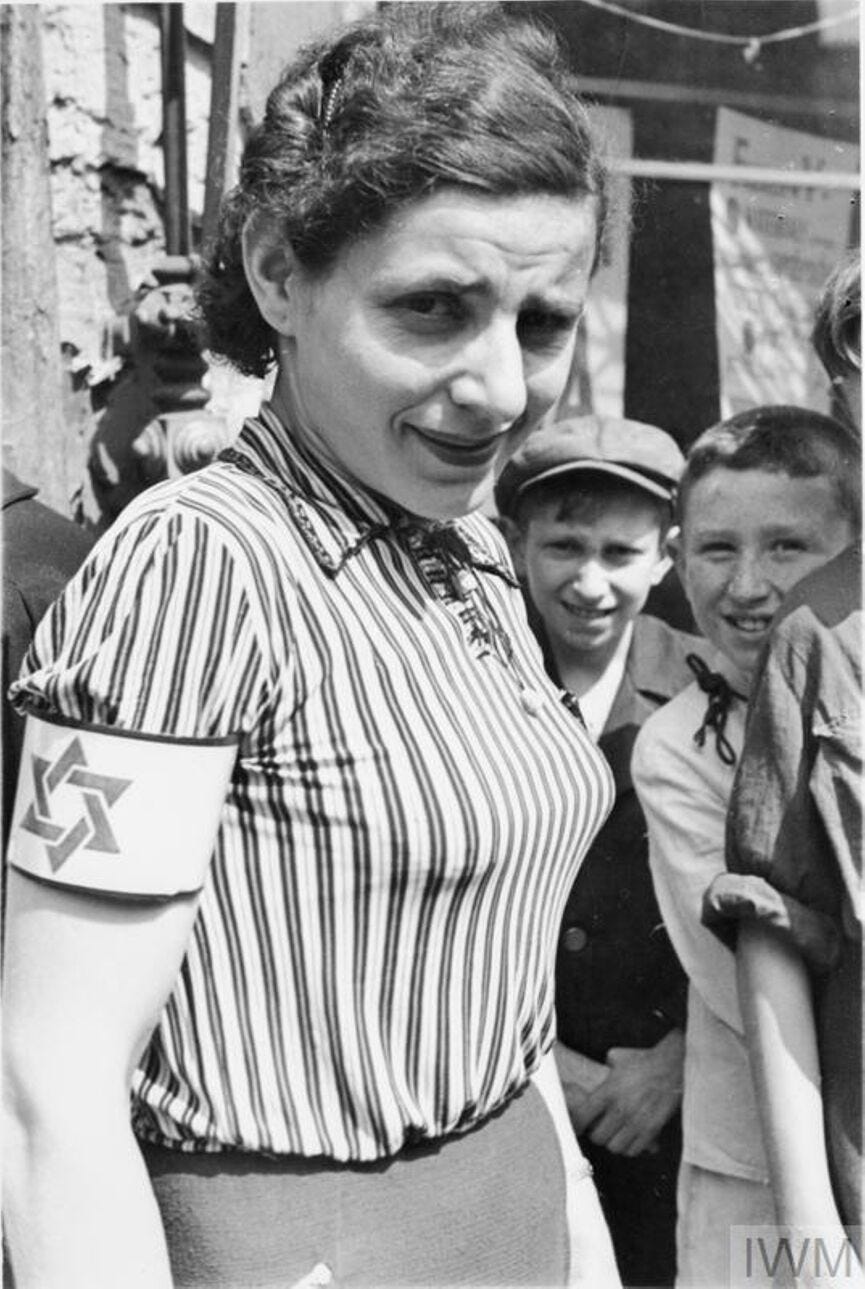Fashioning Ourselves When We Don't Know How To Feel
The Profound Influence of Clothing During Times of Conflict
“Clothes, as despicable as we think them, are unspeakably significant”
-Thomas Carlyle, Scottish historian
How selfish of us to turn to fashion as we witness tragedy. How vain of us to be worried about what to wear. The world is at war with itself and yet I find the time to look for that new fall boot I’ve been meaning to get. The past few days I’ve been obsessing over shoes. Should I feel guilty? I do.
Throughout history, during the darkest hours of chaos, inhumane suffering and uncertainty, clothing has been used as a powerful medium to express individual and collective emotions. Fashion is a tool for escapism and our clothing choices during moments of emotional turmoil are anything but random. They often carry profound layers of meaning, provide emotional comfort, and help express ourselves. More than that, fashion nourishes our innate desire for a sense of control.
The Paradox of Appearance
The term 'fashion' may be unfairly linked to vanity. Surely there must be a better word for ‘fashion’? With a more respected term, would it seem less vain to be fashionable? American author and journalist, Tom Wolfe wrote “Fashion is a code,” and:
“a symbolic vocabulary that offers a subrational but instant and very brilliant illumination of individuals and even entire periods, especially periods of great turmoil.” - Fashion View, 1979, December 29, New York Times
So, what motivates us to put in the effort to appear our best, even in the midst of adversity? Research on this topic has revealed the powerful connection between clothing and our emotions. One study published in the Journal of Experimental Social Psychology found that wearing a lab coat increased attention. Hajo and Galinsky also found that this connection was dependent on two factors, symbolic meaning and the physical experience of wearing them. This study coined the term “enclothed cognition” in 2012.
A touch of vanity may not be selfish after all. It is just our subconscious keeping us sane — an extension of our mind at work.
Allegiance Through War Dress
Clothing during ancient war times was often laden with cultural and symbolic significance. It could represent an individual's rank, allegiance, or the values of their society. Here are a few note-worthy examples:
Tartan of the Highlanders: The tartan patterns of Scottish Highland clans served as a means of identifying members of specific clans and families. In battle, the tartan kilts were both practical for movement and symbolically significant.
2. Native American Clothing: For indigenous peoples, clothing has been a vital element in preserving cultural identity during periods of colonization and oppression. Traditional garments and accessories became not only a symbol of heritage but also a means of resilience.
Holocaust Survivors: In the aftermath of the Holocaust, survivors often wore the clothing they were given in concentration camps as a symbol of resilience and a testimony to their endurance. The tattered and striped uniforms were a powerful reminder of their ability to overcome unimaginable adversity.
Hijab as a Symbol of Choice: The hijab (headscarf) has been a point of contention and resistance for women in the Middle East. While it is often seen as a symbol of modesty and tradition, it has also been used as a form of rebellion when women choose to wear it as an expression of their own faith and identity, rather than as a societal obligation.
Keffiyeh as a Symbol of Solidarity: The keffiyeh, a traditional Middle Eastern headdress, became a symbol of resistance in the Palestinian territories and beyond. Its distinct checkered pattern was worn as a symbol of solidarity with the Palestinian cause, particularly during times of conflict.
Civil Rights Movement: In the mid-20th century, the Civil Rights Movement in the United States harnessed clothing to symbolize resistance. The adoption of certain attire, like the Black Panthers' leather jackets and berets, signified empowerment and defiance in the face of racial injustice.
During periods of war when clothing took on a dual role. It both served as a practical necessity and acted as a powerful symbol of resilience and identity preservation. In World War II, for example, clothing and fashion choices became a part of the war effort. Rationing and shortages of materials led to the creation of "victory suits" for men and "utility clothing" for women. These clothing lines were designed to maximize practicality and minimize waste, but they also represented a collective spirit of resilience and unity. People wore these garments with a sense of pride, reflecting their commitment to the war effort and their ability to adapt in challenging circumstances.
On a more individual level, soldiers going off to war often held tightly to specific pieces of clothing, like a lucky jacket or a family heirloom, for comfort and a sense of connection to home. These clothing items became powerful symbols of personal identity and emotional attachment, providing a source of strength in the face of uncertainty.
The Power of Self-Expression
In addition to providing emotional comfort, clothing serves as a means of self-expression, especially during times when we're grappling with mixed emotions. It allows us to communicate our feelings, values, and identity to the world, even when words fail us.
In 1944, when the world failed Magda Spira, a nineteen year old deported from Auschwitz to Kaiserwald concentration camp, she preserved her dignity and humanity with a scarf.
Magda's journey to acquire this chic accessory is nothing short of extraordinary. Assigned the grim duty of sifting through the possessions of incoming prisoners, she gathered valuables for the SS.
One fateful day, Magda came across a gold coin, a precious commodity in such dire circumstances. Braving the consequences, she decided to trade the coin for extra rations. With a piece of bread in hand, she bartered for half a scarf to conceal her shaven head.
In her testimony, she revealed a poignant truth, "I just wanted to look better because my head was shaved. It was vanity."
To Control What We Can
In times of uncertainty, when our emotions are in turmoil and we struggle to find the right words to express ourselves, our clothing choices become a powerful means of communication. History has shown us that clothing serves as a symbol of collective resilience and unity, as seen during wartime. Research highlights the emotional impact of comfort clothing, offering comfort in times of distress.
These choices, whether to barter for a scarf or to craft makeshift undergarments, are innate desire for a sense of control. In the face of adversity, the impulse to look dignified remains a testament to what makes us fundamentally human—our unwavering determination to preserve our identity and assert our humanity through self-expression, even when all else is stripped away.











Super interesting read!